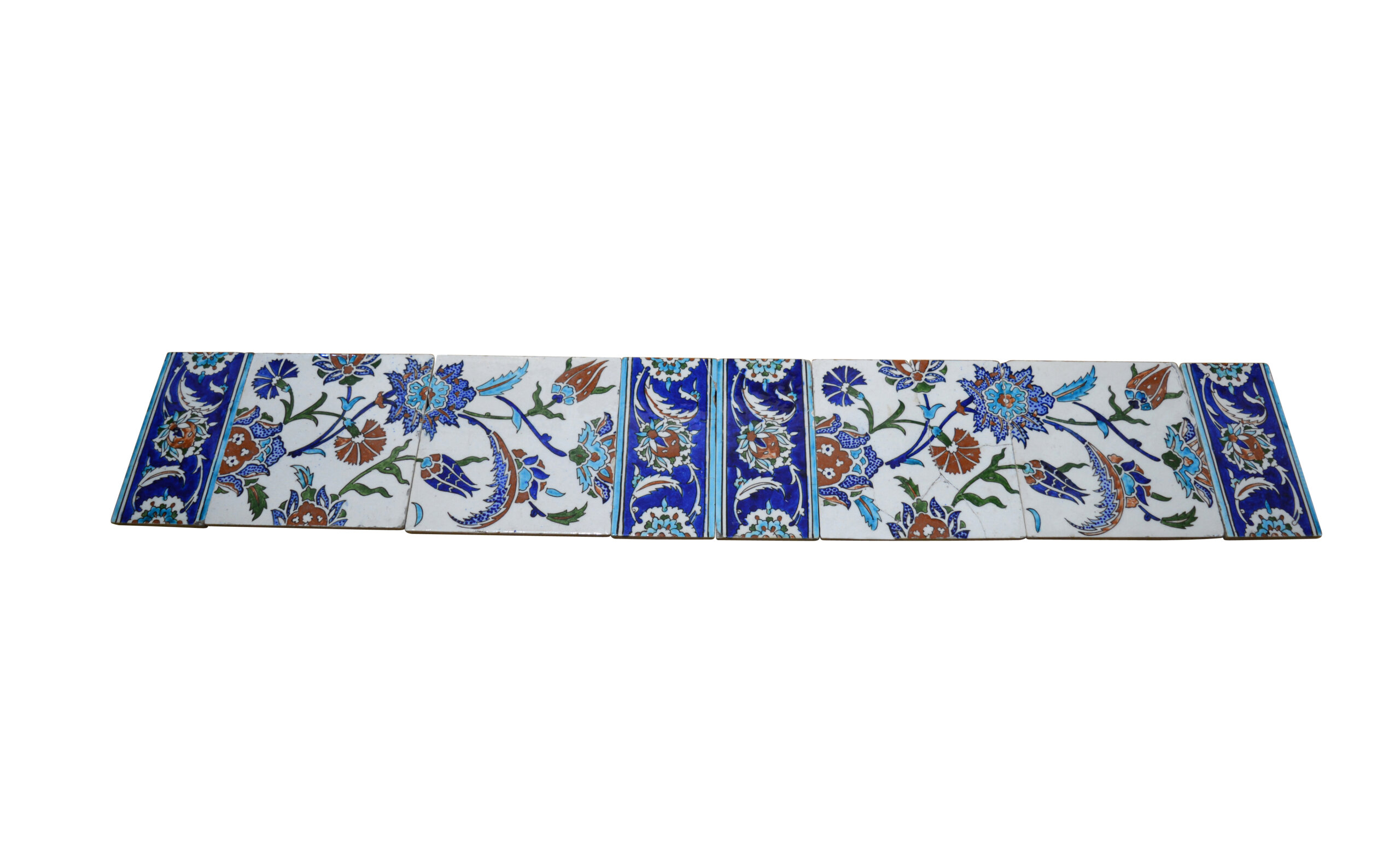Περιγραφή
Interesting Iznik Ottoman tiles, complete motifs, handpainted tulips and carnation design.
Connected to a frame.
We have taken out one tile from the frame to photograph it perimetrically.
And we have photoshopped the correct placement of the tiles according to our specialist, download the research via loudos.gr.
We date them in the early 20th century.
There is some wear and cracks.
Dimensions without frame: 20 x 120 cm.
The Rustem Pasha Mosque in Istanbul was opened in 1563. The interior walls of the mosque are completely covered with masterpieces of Iznik tile art.
All of the patterns used on the panel in this iznik tiles were also used on the tiles in this mosque. At below you can see the connection between the tiles in Rustem Pasha Mosque and ours.
In our opinion, therse tiles may be the first examples of tile samples produced for this mosque. It is very difficult to match colors, especially in tile production. The decoration of an important construction such as a mosque requires meticulous and detailed work. Therefore, tens of thousands of tiles were produced, but very few tiles were used among them. For example, 1000 pieces were produced for a wall covering, but only 100 pieces were used.
The negative and positive aspects of our tiles are as follows: For example, the underglaze is not very clean, there are small dots. The red color has turned to brown. This discoloration of red begins in the 1590s. However, it is very common for all paints to overflow from the contours during this period. There is no overflow in your tiles and the contour lines are of very high quality.
This gives us two different results.
1- These tiles may be samples made especially for the Rüstem Pasha Mosque. The red color is brown due to manufacturing errors.
2- Produced between 1585 and 1590, already red is generally completely deteriorated and turned into brown. However, it is a work that can be considered as “quality” of the period.








